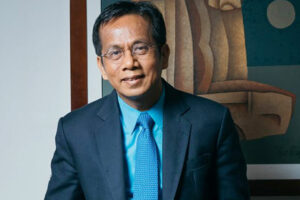A vital setting in the Philippines’ rich history

More than its historical landmarks and noteworthy attractions, the city Manila has been a vital setting in the country’s history, being a witness to the country’s trial and progress. At present, this “Pearl of the Orient” remains an important part of Philippine life as both residents and dwellers, and the world as well, watches its development and growth.
Discovered on June 24, 1571, the city continues to become the heart and soul of the country until this day. During its colonization period, Manila was considered the center of colonial power and became one of the first global cities during this era. Besides, the city was also a hub for trade relationships.
Birgit Tremml-Werner’s research article titled “A global history of Manila in the beginning of the Modern Era” described Manila as a stage for trade relationships and intercultural exchange between Asia, America, and Europe which marked the beginning of the Philippines’ trade relationship with other countries, making a significant contribution to the global economy.
“The following year Miguel López de Legazpi (the first Spanish governor-general of the Philippines) occupied the territory (Manila) and founded a Spanish settlement at this small trading port. Within only a few years it turned into a prosperous port city, calling the attention of early modern global players like China, Japan, and the Netherlands,” Ms. Tremml-Werner wrote.
As a result of these trading activities, the city was crucial to the early modern global integration processes of first-world countries. For instance, it served as a gateway to East Asia for Spain and became one of the central hubs for establishing global connectivity in the world of business.
“Although they all faced various difficulties in establishing themselves in the newly founded city on its path to global integration, they all came because of better economic outlooks and the chance to improve their lives,” Ms. Tremml-Werner highlighted.
In the 1890s, many events rose to prominence in the city of Manila, from the execution of our National Hero Jose Rizal to the country’s anti-Spanish movement. Then, the Spanish fleet was routed at Manila Bay during the Spanish-American War, where the city fell to the hands of American forces and later became the center of the American government of the Philippines.
Moving forward to the American Period, the American government had many plans for modernizing Manila. This is encapsulated in the Burnham Plan of American urban designer Daniel Burham, who was invited by then Governor-General William Howard Taft to the city. The plan included the development of a road system for easy travel, the use of waterways for transportation, the development of a waterfront as a main area of recreation, the construction of parks, parkways, and buildings, and the establishment of a government center for public buildings.
However, as Quezon City was founded in 1939, there were plans of replacing Manila with Quezon City as the capital city, and funds were being diverted for establishing the new capital.
Soon, Manila was declared as an open city at the start of the World War II, and the Japanese took control in 1942. As an emergency measure, the City of Greater Manila was established, where Manila is merged with other cities including Quezon City, Caloocan, San Juan, Mandaluyong, Makati, Pasay, and Parañaque under Executive No. 400.
Soon after, the Japanese government established the Philippine Executive Commission, also known as the “puppet government,” to manage and control the areas of the country they have captured, causing the City of Greater Manila to end.
A war between the Americans and the Japanese occurred in 1945, known as the Battle of Manila, completely destroying what was left of the city.
In 1946, as soon as World War II ended and the Philippines became an independent country, the focus returned to quickly rebuilding the damaged city, which soon became the capital city of the newly established Republic of the Philippines.
However, due to many changes in industrialization, Quezon City eventually served as the capital city of the Philippines in 1948. Yet, because of its historical significance as the seat of government since the Spanish Period, the title of the country’s capital city returned to Manila through Presidential Decree No. 940 on June 24, 1976, the 405th anniversary of the city’s founding.
As one source puts it: “Manila has always been to the Filipino people and in the eyes of the world, the premier city of the Philippines being the center of trade, commerce, education, and culture.”
More than its identity as the Philippine capital city, Manila soon embodied the nation’s metropolitan life. To further improve services in the metro including transportation, health security, education, and cultural life, Metropolitan Manila was established in 1975, consisting of Manila City, Quezon City, Caloocan, and Pasay, and other 13 municipalities. This soon became the National Capital Region (NCR). The years that followed also saw several establishments being built around Manila, although not necessarily in the city itself, namely the Cultural Center of the Philippines, the Metropolitan Folk Arts Theater, the Philippine International Convention Center, the Lung Center of the Philippines, the Philippine Heart Center, and the Kidney Center of the Philippines.
Following the end of the Martial Law era, Manila continued to be a significant part of Philippine history and of Philippine life, especially as the administrations that followed mostly have driven a push for reviving Manila’s glory and gearing it up for the future. This was evident with the establishment of several parks, the rehabilitation of deteriorating facilities and, more recently, the cleanup of illegal vendors and the rehabilitation and restoration of places like the Metropolitan Theater and Jones Bridge.
Celebrating the 452nd anniversary of its founding this year, the capital city will observe Araw ng Maynila on the 24th of June.
According to Manila Mayor Maria Sheilah “Honey” H. Lacuna-Pangan, the Manila city government has prepared various festivities and activities in honor of celebrating this year’s “Araw ng Maynila.” Tree-planting activities, parades, and the revival of The Manila Film Festival, which was held from the time of Manila Mayor Antonio Villegas in the 1960s and started as a Manila-wide event in 1992, are among the festivities prepared.
“It is but fitting and proper that the people of the city of Manila be given full opportunity to participate in the occasion and enjoy the celebration,” as stated in Proclamation 261, signed by Executive Secretary Lucas P. Bersamin on June 15.
The proclamation has also declared June 24 a special non-working day in the city of Manila. — Angela Kiara S. Brillantes




